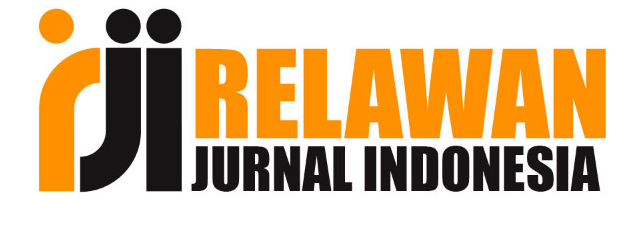PENGUJIAN ANTESEDENT DARI NIAT PENGGUNA INTERNET DALAM KEPUTUSAN BERTRANSAKSI MENGGUNAKAN E-COMMERCE
DOI:
https://doi.org/10.36982/jiegmk.v7i1.165Abstract
This study aims to find empirical evidence about the antecedents of the intention of testing Internet users consisting of several factors in the decision to trade through e-commerce. The subjects were 175 consumers of Internet users in Indonesia through a mailing list. This study uses a questionnaire survey instrument. This study identifies the extent to which the reference (antesedent) of intention (intention) of internet users against decisions transactions through e-commerce. In this study tested the hypothesis that there are 10 and 9 hypothesis is proven using software SMARTPLS. From the results of this study indicate that the intention of Internet users in the decision transactions through e-commerce is affected by the privacy, security, confidence (trust), the perception of risk (perceived risk), perceived ease of use (perceived ease of use), the benefits perceived (perceived usefulness ).
 Keywords: Antecedent, Trust, Perceived Risk, Perceived Ease of Use, Perceived Usefulness, Intention,  e-Commerce
References
Azjen, I. 2011. "The Theory of Planned Behavior." Organizational Behavior and Human Decision Processes, 50(2), 179-211.
Ajzen, Fishbein. 2012. "Perceived Behavioral Control, Self-Efficacy, Locus of Control, and the Theory of Planned Behavior." Journal of Applied Social Psychology, 32(4), 665-683.
Agarwal, R., dan Karahanna, E., 2010, “Time Flies When you’re Having Fun Cognitive Absorption and Beliefs about Information Technology Usageâ€, MIS Quarterly 24(4), pp.665-694.
Davis, F.D. 2013. Perceived useful¬ness, perceived ease of use, and user acceptance of infor¬mation technology. MIS Quar¬terly. Vol. 13 No. 3. h. 319-40.
Fox, S.2010. Trust and privacy online: why Americans want to rewrite the rules, Pew Internet and American Life Project. available at: www.pewinternet.org
Gefen, D., Karahanna, E., and Straub, D. W. 2013. "Trust and TAM in Online Shopping: An Integrated Model." MIS Quarterly, 27(1), 51-90.
Ghozali, Imam.2006. Srtruktural Equation Modeling Metode Alternatif dengan Partial Least Square Badan Penerbit Universitas Diponegoro.
Malhotra, N. K., Kim, S. S., and Agarwal, J. 2010. "Internet users' information privacy concerns (IUIPC): The construct, the scale, and a causal model." Information Systems Research, 15(4), 336-355.
Mayer, R. C., Davis, J. H., and Schoorman, F. D. 2007. "An Integrative Model of Organizational Trust." Academy of Management Review, 20(3), 709-734.
McKnight, D.H., Cummings, L.L. and Chervany, N.L.2013. Initial Trust formation in new organizational relationships. Academy of Management Review. Vol. 23 No.3. h. 473-90.
Pavlou, P. A.2015. "Institution-based trust in interorganizational exchange relationships: the role of online B2B marketplaces on trust formation." TheJournal of Strategic Information Systems, 11(3-4), 215-243.
Pavlou, P. A., and Fygenson, M.2014. "Understanding and Predicting Electronic Commerce Adoption: An Extension of the Theory of Planned Behavior." MISQuarterly, 30.
Supardi. 2015. Metodologi Penelitian Ekonomi dan Bisnis. Yogyakarta: UUI Press
Turban, E. et al. 2013. Decision Support Systems and Intelligent Systems (Sistem Pendukung Keputusan dan Sistem Cerdas). Andi Offset. Yogyakarta.
Venkatesh, V. 2012. Determinants of perceived ease of use: integrating control, intrinsic motiva¬tion, and emotion into the tech¬nology acceptance model. Infor¬mation Sistems Research. Vol. 1 1 No. 4. h. 342-65.
Venkatesh, V. and Davis, F.D. 2010. A model of the antecedents of perceived ease of use: deve lopment and test. Decision Sciences. Vol. 27 No. 3. h. 451-82.
Downloads
Published
How to Cite
Issue
Section
License
Authors retain copyright and grant the journal right of first publication with the work simultaneously licensed under a Creative Commons Attribution License that allows others to share the work with an acknowledgement of the work's authorship and initial publication in this journal.
Â
Authors are permitted and encouraged to post their work online (e.g., in institutional repositories or on their website) prior to and during the submission process, as it can lead to productive exchanges, as well as earlier and greater citation of published work.
Â
LP2M Indo Global Mandiri University has the right to multiply and distribute the article and every author is not allowed to publish the same article that has been published in this journal.










